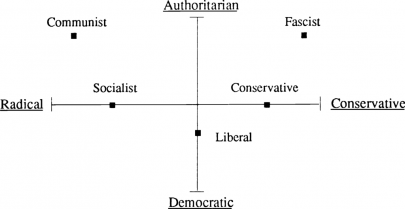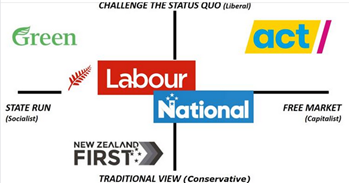The Christian Vote (7)
Tuesday, August 22, 2023

Good Morning and Welcome to this week’s Gospel and Culture update, by Alan Vink
The Christian Vote (7)
Tuesday 22nd August 2023
The Political Spectrum
There is no doubt that voting in NZ has become more interesting. This is largely because the so called minor parties are having a greater presence in the political landscape and in parliament. Even though MMP is generally regarded as giving us more representative form of Government we really haven’t seen it play out that way until 2020. Prior to 2020 it has still been essentially a contest between National and Labour, not that different to the former electoral system of ‘first past the post’. That has changed now. We now have a substantial splash of yellow, green and bright red in the mix. Who knows a small splash of black may also be in again come 14th October? What we can be pretty certain about is that the overall %age of the party vote that Labour and National have traditionally attracted will be considerably lower as Act and the Green’s pick up more of those votes.
Below is a helpful diagram Political spectrum - Wikipedia that captures (more or less) the different political positions that exist and their relationship to one another.

Former MP and Political Strategist, Heather Roy offers an interesting analysis here as far as the ‘Political Spectrum’ conversation is concerned. It is similar diagram as the first one but with slightly different wording (and a different format).

POV. Notice the overlap of Labour and National. Both are ‘centrist’ parties. On moral and social issues it used to be that National was more conservative. This is no longer the case. In fact what is particularly interesting is that New Zealand First is by far and away the most consistent socially conservative party. Act on the other hand is far right when it comes to less Government and free market economics yet as liberal as the Greens on social policy. It would seem that a growing number of Christians are conservative on moral and social issues and leaning toward a more liberal position on economic policy. The net result of all this is that we now have a ‘murky middle’. That said, it is true that the New Conservatives if they were included in the above diagram would be somewhere in the middle of the lower right quadrant.
